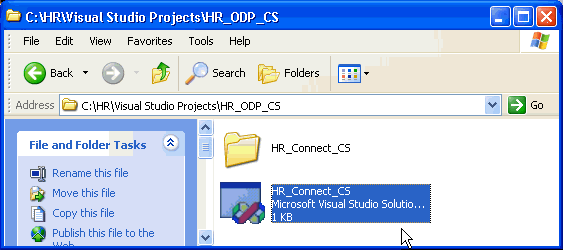


A combination of several programs can also be carried out.Ĭode generation and completion: Using the Ice Porter tool, we port all modules and reports, one by one. We jointly define the target structure of the individual application modules and components and therefore of the entire application. Together with the client, we coordinate the precise timetable and the course of action to be taken. Project setup and partitioning: The Porting Project is set up based on the results of the analysis. Depending on the application's complexity, this could take two days or more. The fee for the Detailed Analysis is calculated based on the hours of work performed. The potential client receives a results report, a fixed-price offer and a rough timetable for the porting. There is no charge for this first Rough Analysis.ĭetailed Analysis: We examine the application's modules and reports for problem areas and dependencies. This lets us estimate the time, the effort and the cost of the Porting Project with a fluctuation margin between 10 and 15 per cent.
ICACHING PROVIDERS .NET CODE
We also provide advice on technology selection, various migration approaches and what the future holds for Gupta.įree (rough) Analysis: The PPJ Inventory tool and our constantly refined and updated checklists are used to determine the size and complexity of the code as well as any peculiarities. Initial questions are answered in an on-site meeting or an online demonstration. Information: An information package consisting of reference examples shows how the Porting Project is carried out in practice. NET, is fully executable and has been prepared for further development in Microsoft Visual Studio. The test phase then finally lead to an application that has been fully ported to. The project really begins with the porting phase after all parts of the evaluation phase have finished.

This also includes a fixed-price offer that corresponds to the quantity and complexity of the code. The Porting Project Procedure Model consists of a number of phases: In the evaluation phase, fecher develops with its potential clients a solid decision-making basis for the porting of their Gupta application. If additional coaching is needed, our experts remain available at all times. To make sure that everything runs smoothly, our experts will train them beforehand. Your developers take care of the fine tuning and the finalization. After the Automated Porting, fecher then delivers the compiled code to the client's in-house developers. The cost, which is already lower than for redevelopment, is thus lowered even further. In Cooperative Porting, clients bring in their own development resources. In an All-inclusive Porting, we deliver a "turn-key" ported application at the end of the project. We always conduct our Porting Projects according to a proven procedure model. Using using using System.Gupta Porting: Project Plan and Procedure Model The EncryptionClientSinkProvider using System using System.IO The encryption algorithm and the encryption key are then passed to the sink's constructor.

In addition to reading the relevant configuration file parameters, both the client-side sink provider (shown in Listing 13-10) and the server-side sink provider (shown in Listing 13-11) have to read the specified keyfile and store it in a byte array. String encryptionAlgorithm = (String) properties Public EncryptionClientSinkProvider(IDictionary properties, ICollection providerData) You can access additional parameters in the sink provider's constructor, as shown in the following source code fragment: In the following snippet you see how the server-side sink can be initialized: The following excerpt from a configuration file shows you how the client-side sink will be configured: The same file has to be available to both the client and the server sink. The second parameter, "keyfile", specifies the location of the previously generated symmetric keyfile. The first one is "algorithm", which specifies the cryptographic algorithm that should be used (DES, TripleDES, RC2, or Rijndael). Contrary to the previous sink, the EncryptionSink expects certain parameters to be present in the configuration file.


 0 kommentar(er)
0 kommentar(er)
